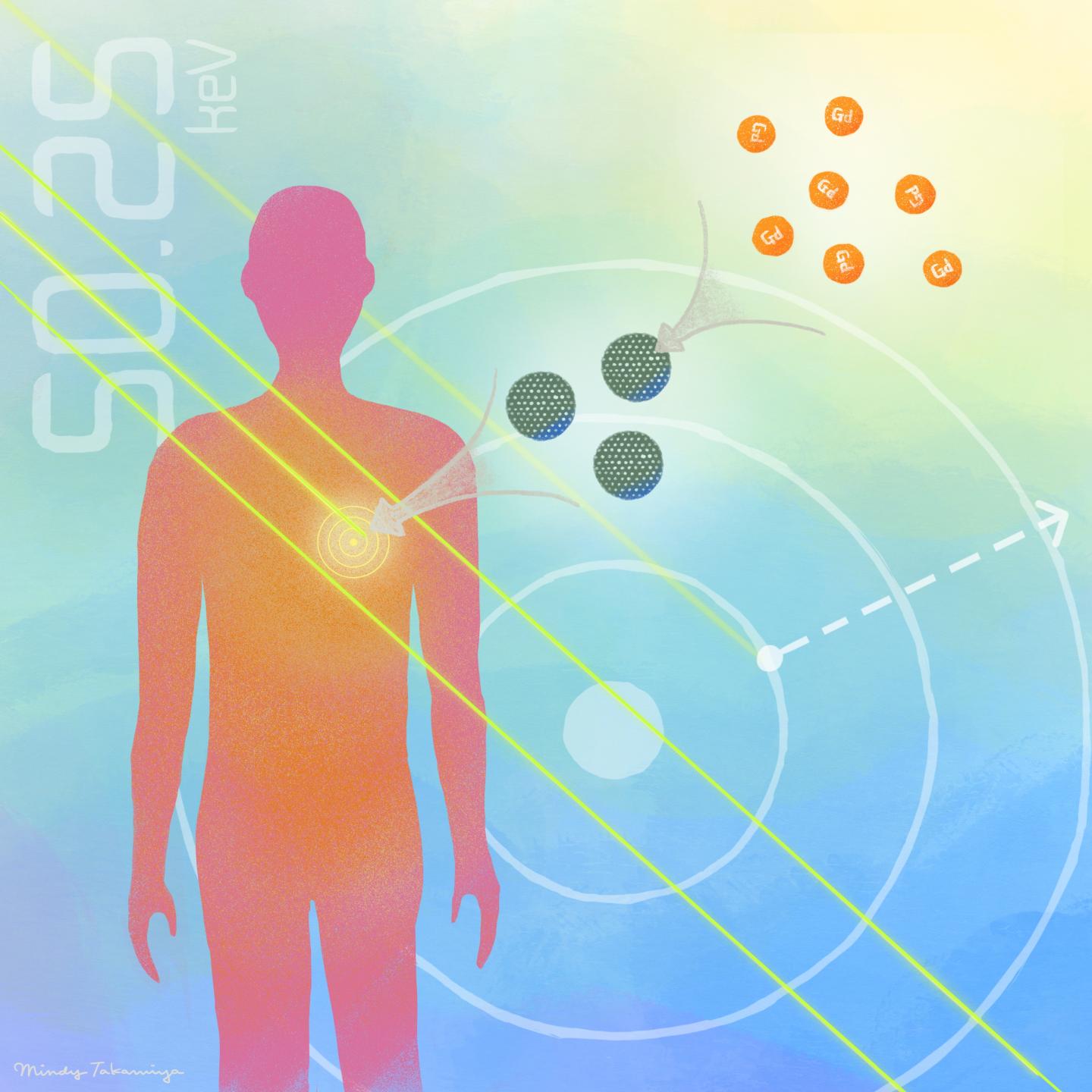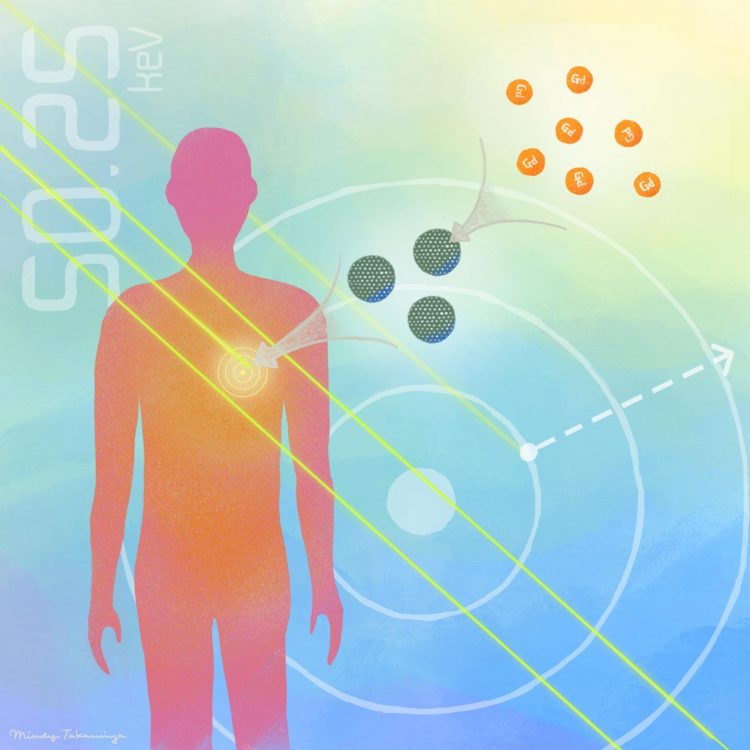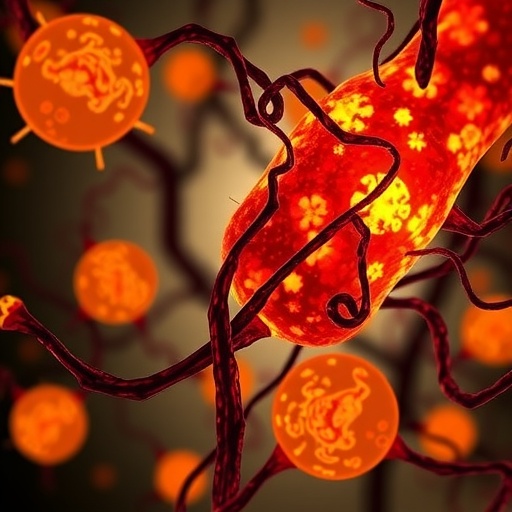X-rays could be tuned to deliver a more effective punch that destroys cancer cells and not harm the body

Credit: Illustration by Mindy Takamiya
An element called gadolinium delivered into cancer cells releases killer electrons when hit by specially tuned X-rays. The approach, published in the journal Scientific Reports, could pave the way towards a new cancer radiation therapy.
“Our method opens up the possibility of selectively amplifying the effect of X-ray radiation at the tumour site,” says Kotaro Matsumoto of Kyoto University’s Institute for Integrated Cell-Material Sciences (iCeMS), who developed the technique with Fuyuhiko Tamanoi and colleagues in Japan, Vietnam, and the USA. “This solves one of the major problems of current radiation therapies, where only a small amount of X-rays actually reach the tumour.”
Conventional radiation therapies employ polychromatic X-rays, consisting of various energy levels, with low-energy X-rays failing to penetrate the body’s surface. Monochromatic X-rays, on the other hand, have the same precisely tuned energy level. If they could be aimed at electron-releasing chemical elements inside tumours, they could be damaging.
To achieve this, the researchers used specially designed silica nanoparticles that were loaded with the chemical element gadolinium. The cancer cells in a 3D tumour culture effectively consumed the particles after one day of incubation. The particles specifically located just outside tumour cell nuclei, where their most critical machinery is found.
At the SPring-8 synchrotron facility in Harima, Japan, the researchers aimed monochromatic X-rays at tumour samples containing gadolinium-loaded nanoparticles.
X-rays tuned to an energy level of 50.25 kiloelectron volts (keV) that targeted the samples for 60 minutes completely destroyed the cancer cells two days following irradiation.
Tuning the X-rays to an energy level just below 50.25keV did not have the same effect. The researchers explain that the X-rays are specifically tuned so that their energy can be absorbed by gadolinium. When they hit it, gadolinium releases low-energy electrons into the cancer cell, damaging its vital components, including DNA, and killing it.
The X-rays had no effect on cells that did not contain gadolinium-loaded nanoparticles.
“Our study demonstrates that a new type of radiation therapy for cancer can be developed,” says Tamanoi. “We can expect radiation therapy with increased efficacy and less side effects.”
###
For more information about this research, contact
Fuyuhiko Tamanoi
[email protected]
DOI: 10.1038/s41598-019-49978-1
About Kyoto University’s Institute for Integrated Cell-Material Sciences (iCeMS)
At iCeMS, our mission is to explore the secrets of life by creating compounds to control cells, and further down the road to create life-inspired materials that confront the myriad problems that afflict modern society. In only a decade, collaborative research at iCeMS has resulted in significant cutting-edge scientific discoveries, and the creation of over 1500 unique materials. We will keep running for the greater future of science.
https:/
For more information about iCeMS, contact
Mari Toyama / I. Mindy Takamiya
[email protected]
Media Contact
Mari Toyama
[email protected]
Related Journal Article
http://dx.





